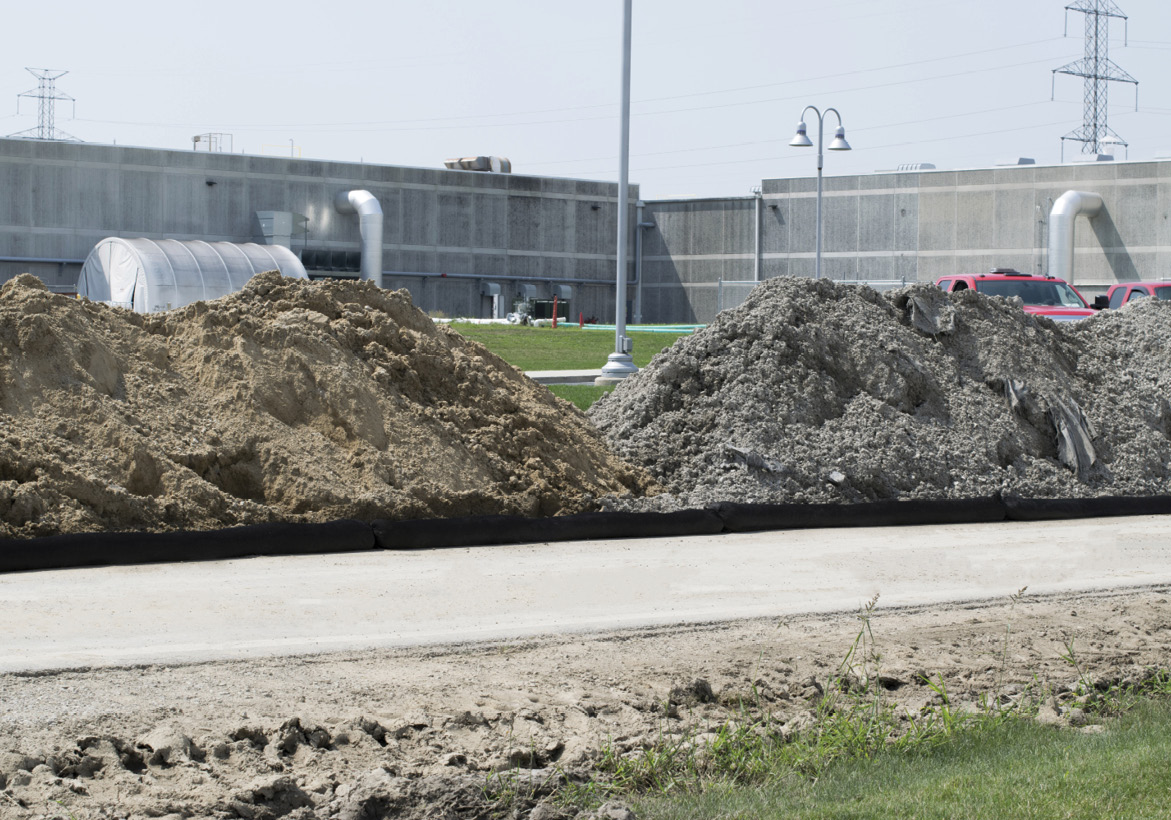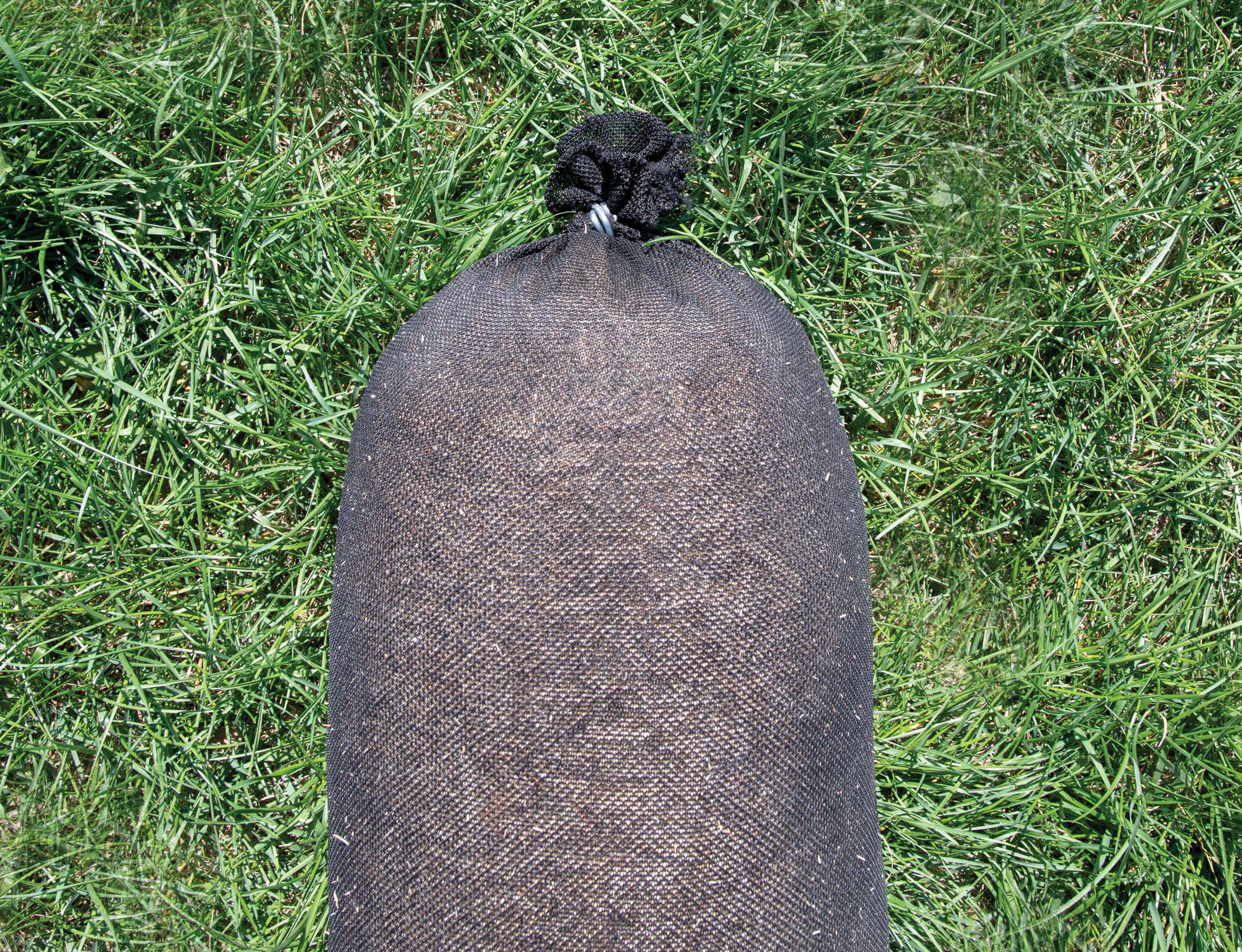Siltworm makes erosion control on construction sites much more efficient.

[Photo: Courtesy of Siltworm]
Even though they are trenched into the ground, silt fences collapse because they can’t hold the weight of the water and sediment buildup, which leads to costly replacements. Siltworm’s product holds up even in harsh weather, lasting the span of an entire project or longer. “The rolled filter sock creates filtration and reduces diversion or damming,” Moore says. It is extremely durable and versatile—and it’s made of recycled materials, too.

Siltworm’s rolled filter sock offers a smart alternative to silt fencing. [Photo: gb&d Staff]
Withstands harsh weather.
Siltworm can be placed on top of ice, asphalt, or any hard surface. You can’t use silt fences in the winter months because you can’t trench into frozen ground.
Easy removal and installation.
Installing Siltworm rarely requires machinery. Staking and saddling are only required in ditch check, slope interruption, and concentrated flow areas, while perimeter control applications under 12% grade do not require staking or trenching.
Versatile applications.
The product can be used for inlet protection, slope interruption, perimeter control, ditch check applications, and other construction site applications.
Better water quality.
“Part of what I really love about Siltworm is how we help keep our receiving waters clean,” Moore says. Their recycled softwood fill material has a higher filtration rate than regular tree scraps or mulch. Siltworm also has the capacity to improve water quality as it separates petroleum-based contaminants, heavy metals, and other contaminants from stormwater.
Cost-effective.
Rolled filter socks last the full length of a construction project. In some cases, they can even be reused.
Highly absorbent filter.
Siltworm recycles kiln-dried softwood to use as a filter media, which has a high absorption rate. According to third-party testing, their product retains 90% of sediment—silt fences typically only capture 27 to 54%.
Extremely mobile.
If the job site changes, Siltworm is easily moved. Because silt fences are trenched into the ground, it takes a lot of time and labor to remove them—plus the cost of heavy equipment.
Green erosion control.
The product helps prevent pollution. Its 100% recycled fill material is weed-free, seed-free, and disease-free. When your project is done, you can spread the fill material on the topsoil to decompose, leaving behind a small amount of waste.
Learn more about Siltworm and see more gb&d erosion control stories.
FROM OUR NOV+DEC 2018 ISSUE



